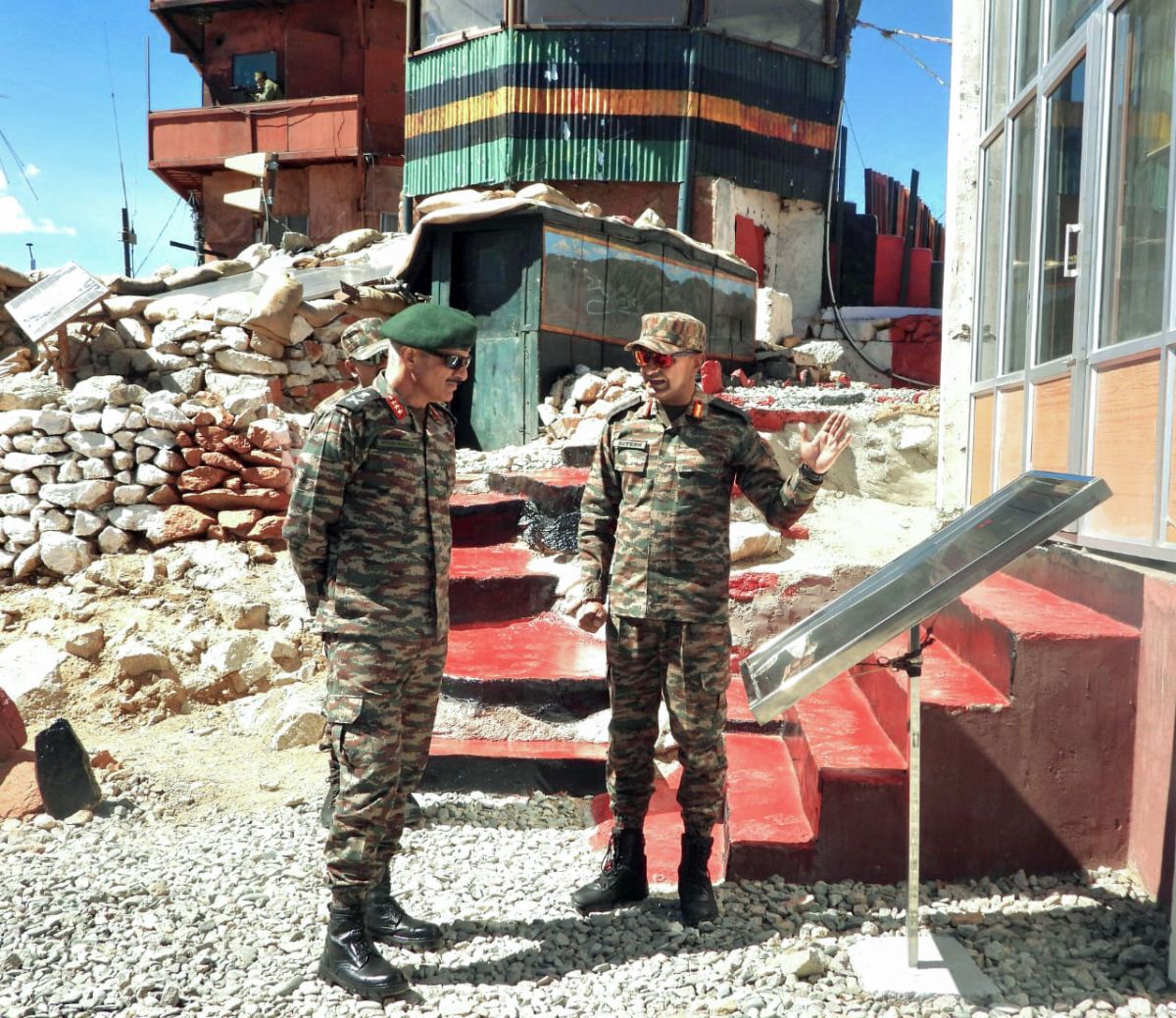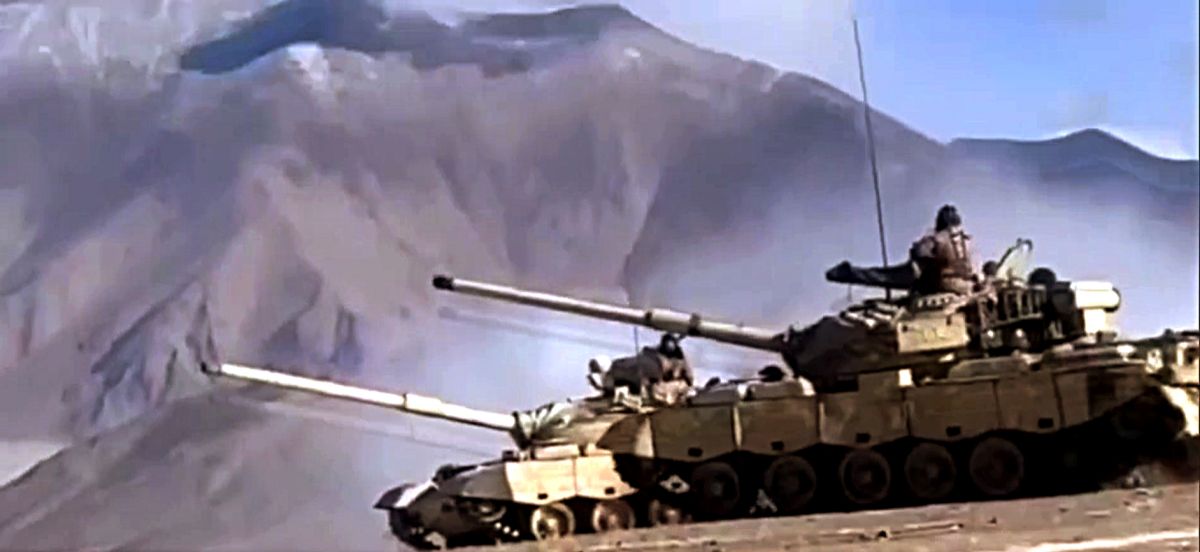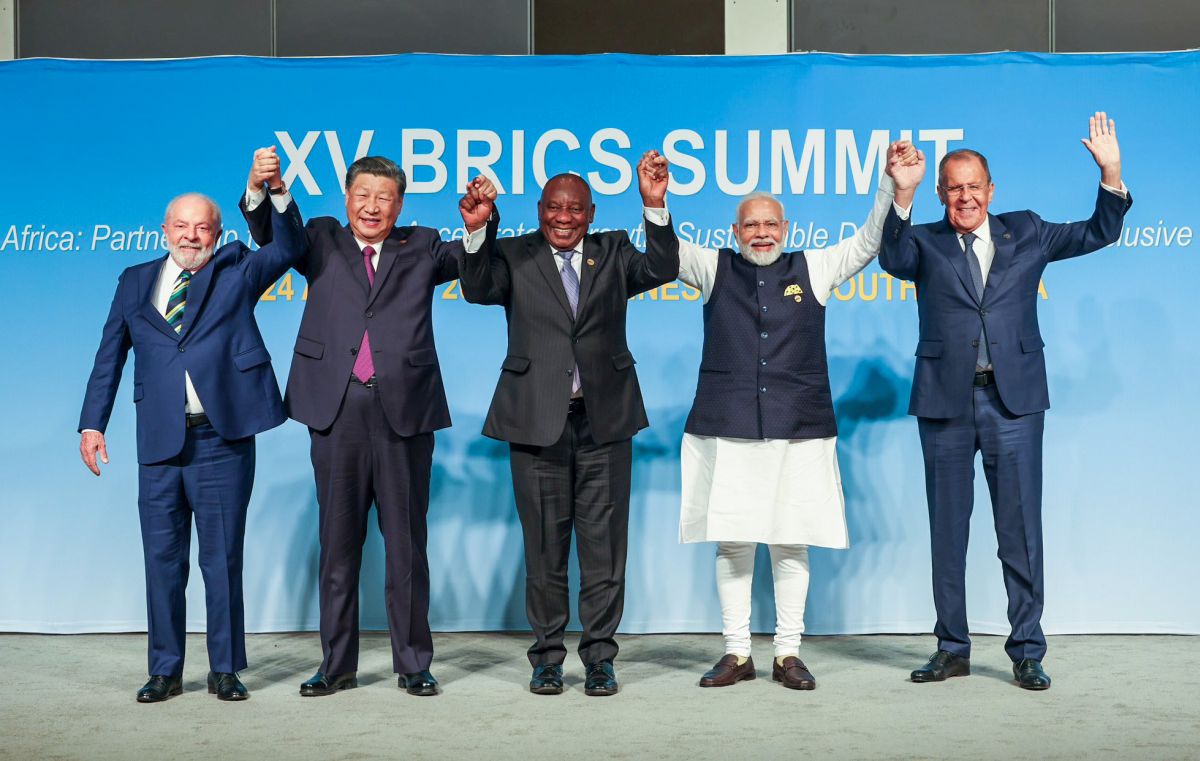'Disengagement is merely the first step in a lengthy process of arriving at a new normal along the LAC in Eastern Ladakh and the entire land boundary.'
'The Indian government should insist on the restoration of the status quo ante in Eastern Ladakh.'

"For all the sabre-rattling, keeping the peace with India is in China's interest. China faces an increasingly adverse external environment and economic uncertainty at home. This is something that we in India need to keep in mind," points out Manoj Kewalramani, author of Smokeless War - China's Quest for Geopolitical Dominance and a leading Indian observer of Chinese politics, foreign policy and approaches to new technologies.
Fluent in Mandarin, he publishes a daily newsletter translating and analysing discourse from the People's Daily (external link), the Chinese Communist party's flagship newspaper.
Kewalramani is a Fellow-China Studies and the Chairperson of the Indo-Pacific Studies Programme at the Takshashila Institution, the well-known think-tank.
In an e-mail interview with Rediff.com's Archana Masih, Manoj Kewalramani explains recent developments in India-China relations and what could likely happen if Prime Minister Narendra D Modi and Chinese President Xi Jinping meet at the BRICS Summit in Kazan, Tatarstan, south west Russia, this week.
"They (Modi, Xi) haven't had a formal bilateral meeting since the Mamallapuram summit in 2019. But I am not expecting any significant breakthroughs even if there is a meeting, and perhaps it is useful to keep expectations low," he says in a detailed, must-read, two part interview.
There have been signs of a thaw in the deadlock between India and China after the four-and-a-half year standoff in eastern Ladakh. China said it had narrowed differences with India while Dr Jaishankar said that 75% of disengagement issues had been resolved.
What in your opinion are the reasons for this softening from a previously held rigid stance?
I am not sure I would characterise the current discourse as a softening of positions.
I would rather see this as a process of continuing negotiations. Both sides recognise that the relationship appears to be in a state of suspended animation since the events of the summer of 2020. And both also seem to appreciate that this is an unsustainable situation in the long term.
Yet, neither seems to have ceded any substantive ground. Within India, there is clearly a new discourse around China policy that is taking shape. This is evident in the recent discussions around the nature of disengagement in Eastern Ladakh and Chinese investments, which was sparked by the Economic Survey.
On the other hand, there has been a stylistic shift in the Chinese approach towards India. This can be seen in the recent dialogue between the two foreign ministers and the engagements of the new Chinese ambassador Xu Feihong.
None of this, however, means that there has been a substantive shift in Beijing's approach to New Delhi or its strategic objectives in the Indo-Pacific region. Beijing still seeks a unipolar Asian order.

Considering that the countries have had a complex and difficult relationship which deteriorated after the Galwan encounter, what is the possibility (and definition) of normalisation of the relations?
There has been some debate on what does normalcy mean when the Indian government says that peace and tranquillity on the borders and respect for the LAC (Line of Actual Control, the border separating India and China) are essential for normalcy in bilateral relations.
Some people tend to point to the growing bilateral trade figure to make the point that the relationship seems to be rather normal.
From my perspective, this misses the point.
First, there is clearly a de-risking approach when it comes to trade with China that is evolving within India. This, in fact, appears to be the global new normal. Second, such a limited view based on trade data places a very low ceiling on the potential of the India-China relationship.
There is so much more depth that can be achieved in our bilateral engagement, which has not been possible currently due to Chinese actions in Eastern Ladakh. From urban governance to climate change and from connectivity to people-to-people and investment exchanges, there are several domains of engagement which have been left unexplored.
Look at the lack of direct flights between the two countries or challenges in terms of visas and travel; engagement has regressed across so many domains.
So yes, I would say that if one looks at the potential of the relationship which is untapped, one can grasp that the relationship is in an abnormal state.
In regard to the possibility of normalisation, I think that this is a debate that is ongoing in India. It will likely continue to be dictated by how the situation in Eastern Ladakh is resolved.
But there are structural factors that indicate that volatility in the relationship will be the new normal, even if we arrive at a satisfactory outcome in Eastern Ladakh.

In view of China's past intransigence, is it possible to have an agreement on the restoration of the status quo before April 2020 as far as disengagement, de-escalation and withdrawal of troops is concerned?
Especially in Depsang and Demchock where the People's Liberation Army is blocking the Indian Army's patrolling points?
My view is that the Indian government should insist on the restoration of the status quo ante in Eastern Ladakh. Under no circumstances should New Delhi accept ceding of patrolling rights as part of a resolution.
As has been evident over the last four years, this will be a lengthy process. India must maintain strategic patience.
There are lessons that we can draw from the Sumdorong Chu standoff, which began in 1986, with eventual disengagement taking place in the mid-1990s.
Let me also add that for all the sabre-rattling, keeping the peace with India is also in China's interest. China faces an increasingly adverse external environment and economic uncertainty at home. This is something that we in India need to keep in mind.
Time is a critical factor in diplomacy. And shifts in the overall balance of power over time can create opportunities that perhaps a year or two ago were non-existent.

Have military and diplomatic talks reached their limit and achieved whatever they could and now the last mile, so to say, lies with the highest leadership of Prime Minister Modi and President Xi?
I don't view this as an either-or scenario. India and China need dialogue at different levels for different purposes. Although it would be a positive sign, I don't think an off-the-cuff meeting between the Indian prime minister and the Chinese president can lead to an immediate resolution of the challenges along the disputed land boundary.
Disengagement is merely the first step in a lengthy process of arriving at a new normal along the LAC in Eastern Ladakh and the entire land boundary.
There is a loss of trust between the two forces on the ground, in terms of how boundary management used to happen in the past. Both sides are going to continue to build infrastructure and military capacity along the boundary.
These factors along with the use of new technological tools are reshaping the dynamics requiring a rethinking of border management protocols. So, we're far away from the last mile for now.

What can one expect in Kazan [and also in Rio] where diplomatic efforts are being made for the two leaders to actually meet on the sidelines of the BRICS/G20 Summits?
As mentioned earlier, it would be a positive sign for the two leaders to meet formally. They haven't had a formal bilateral meeting since the Mamallapuram summit in 2019. But I am not expecting any significant breakthroughs even if there is a meeting, and perhaps it is useful to keep expectations low.
Instead, what I believe is needed is for both sides to demonstrate greater imagination to restore a broader dialogue process. The objective of this engagement would be to place the relationship within a larger strategic context, deepen understanding of each other's interests and policies, clarify red lines along with negotiating modalities of adherence to them by each side, be it along the disputed boundary or within each other's peripheries, and cooperating where interests coincide.
This will take time and patience. Leaders can give directions, but the interpretation and implementation has to happen at the levels of ministries, services and lower bureaucracies.
This process should cover dialogue on formally clarifying territorial claims along with establishing mechanisms for exchanges on strategic and economic issues and on climate change adaptation and mitigation.
- Part 2 of the Interview: 'India-China Ties Will Be Deeply Strained'
Feature Presentation: Aslam Hunani/Rediff.com







